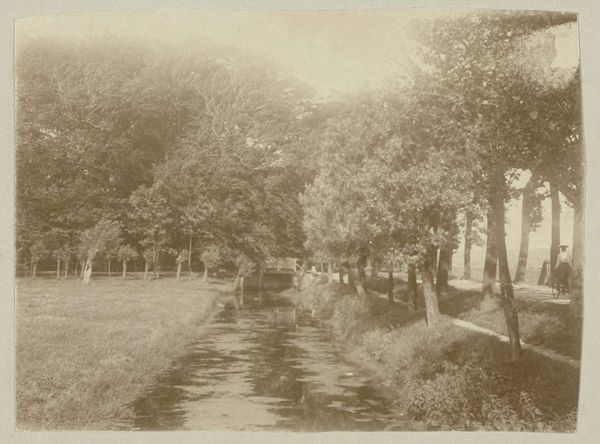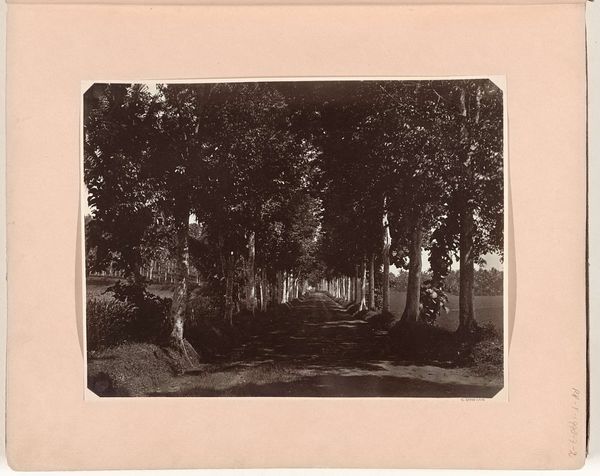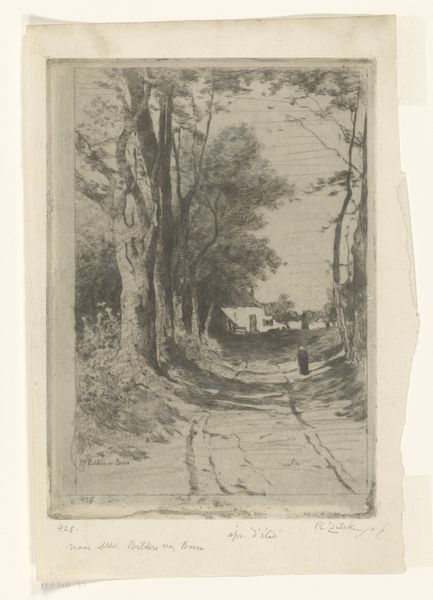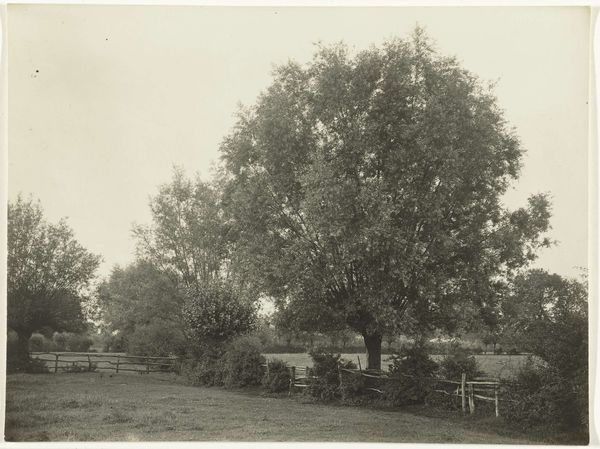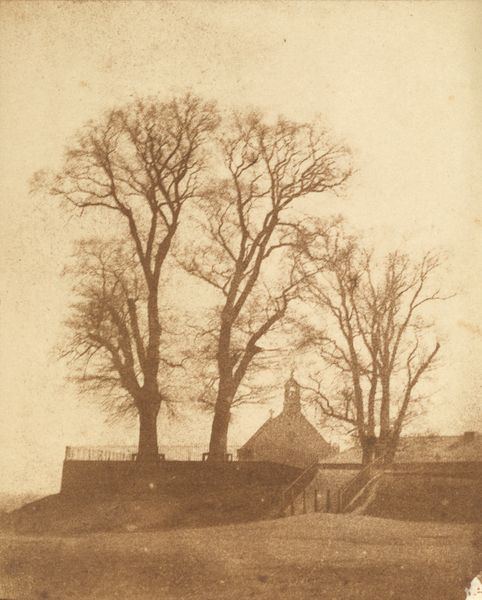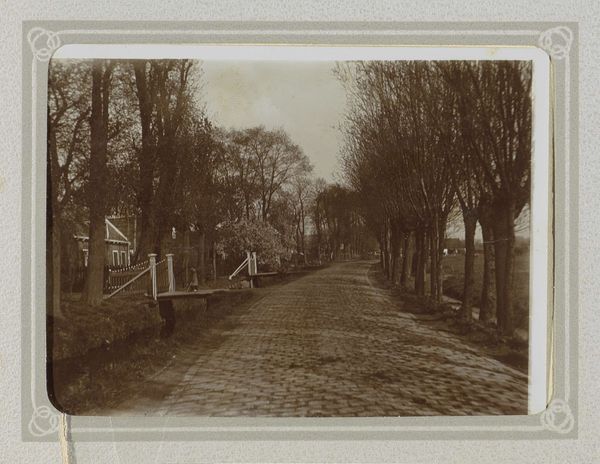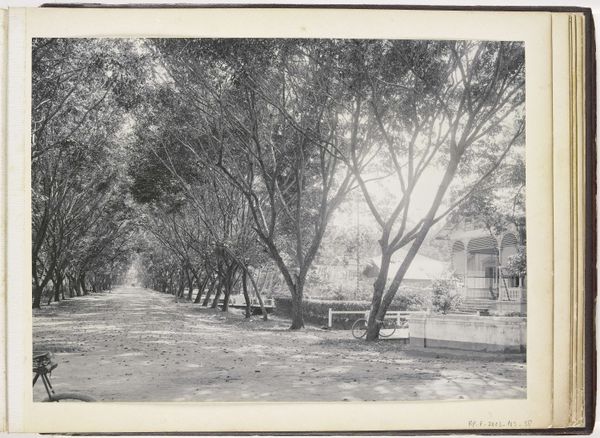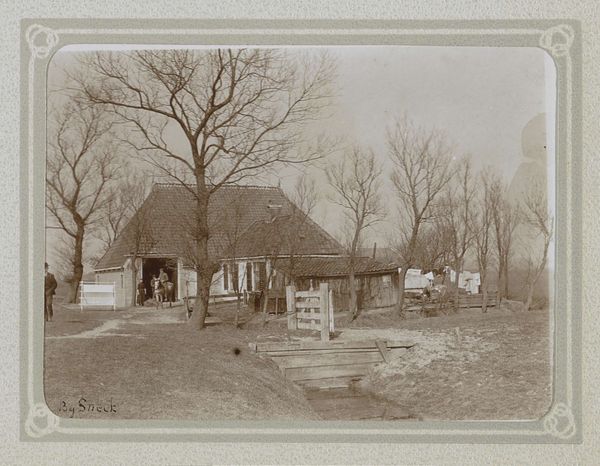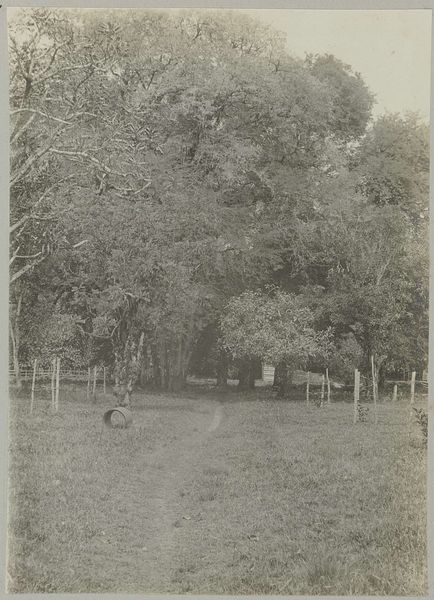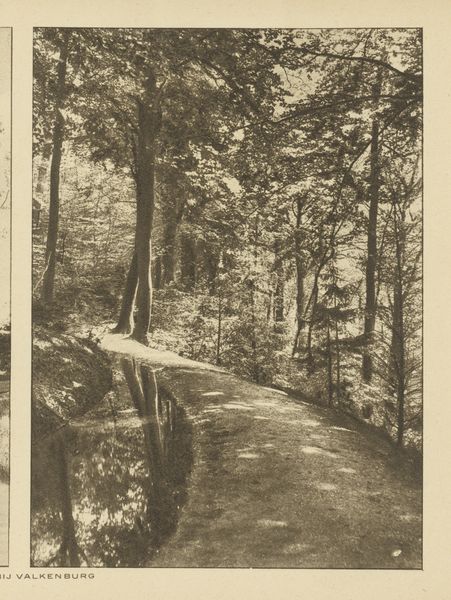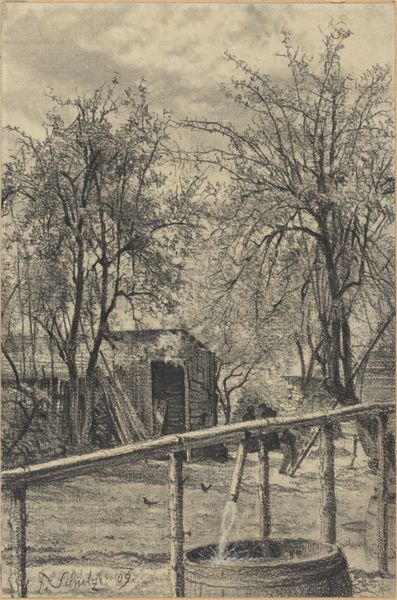
photography
#
pictorialism
#
landscape
#
photography
#
realism
Dimensions: height 161 mm, width 118 mm
Copyright: Rijks Museum: Open Domain
Editor: Here we have a photograph, "Gezicht op een sloot naast een boerderij in Breukelen," placing it before 1915, attributed to an anonymous artist. It portrays a quiet farm scene along a waterway. The soft, almost hazy quality of the image lends it a somewhat nostalgic mood. I am especially intrigued by the textures created through photographic techniques used to document rural life and landscape. How do you approach such an image, given its material qualities? Curator: What strikes me immediately is the way this image implicates labour, and moreover, the way it naturalizes such implication, hiding production while focusing on its ostensible topic. Note the emphasis on ‘realism’ combined with 'pictorialism.' Isn't it odd? The materials of the scene – wood of the farm, water, land – all processed to support unseen structures of labour, are depicted using the highly manufactured methods of photographic process in Pictorialism. What is revealed here is not labor itself, but the photographic act itself. It doesn't record an objective truth; instead, it crafts a particular view of the working landscape, sanitizing the image as a kind of raw data for higher culture consumption. Editor: I see your point about the constructed nature of this "realistic" scene. The labor in the frame becomes obscured by the aesthetics. Curator: Exactly! Consider what the ‘landscape’ actually means: not wilderness, not a pristine environment, but arable land fashioned to perform a certain degree of economic production. The soft focus lends an air of romanticism but this choice deliberately ignores the true material conditions of labour on which this ‘idyll’ relies. The social relations of a rural economy appear idealized precisely by manipulating the material process of its representation. Do you think the image reflects more than that, perhaps a comment on artistic process itself? Editor: That’s insightful! So, while seemingly documenting a simple scene, it's actually pointing to a larger commentary about labor and the romanticizing gaze in art? This is very different to my initial reaction. Curator: Yes, think of it as highlighting how art is both a product of and a commentary on its socio-economic context and material means. Perhaps a critique about artistic creation, using a similar approach to agricultural means? The manipulation involved. Editor: I never considered that. Now I will question landscape with an economical position when I find it again.
Comments
No comments
Be the first to comment and join the conversation on the ultimate creative platform.
